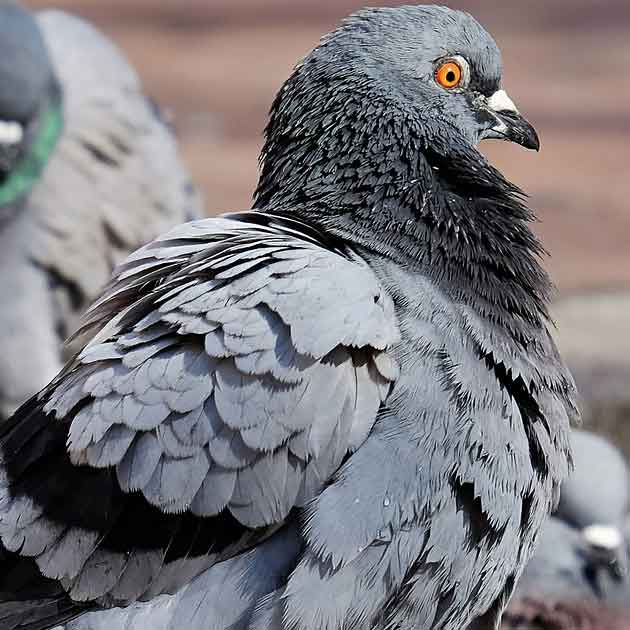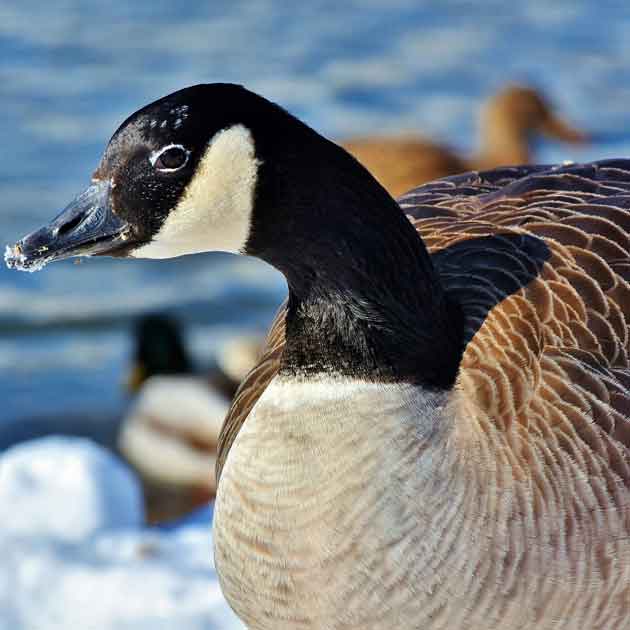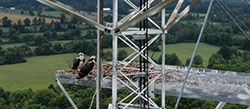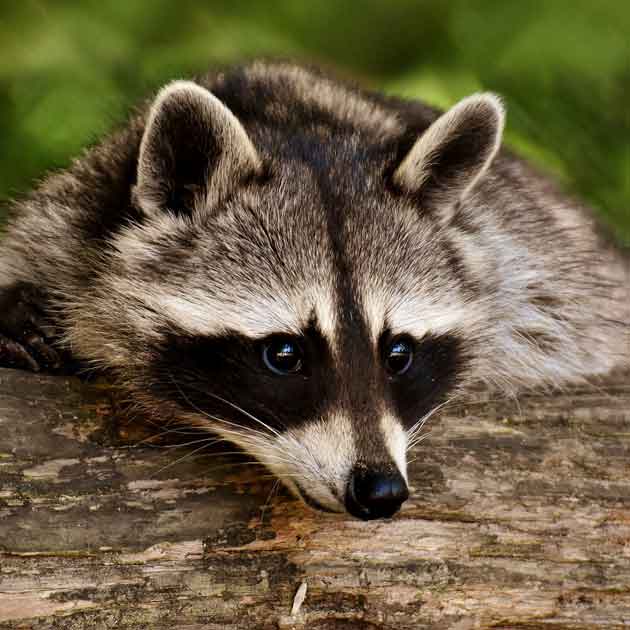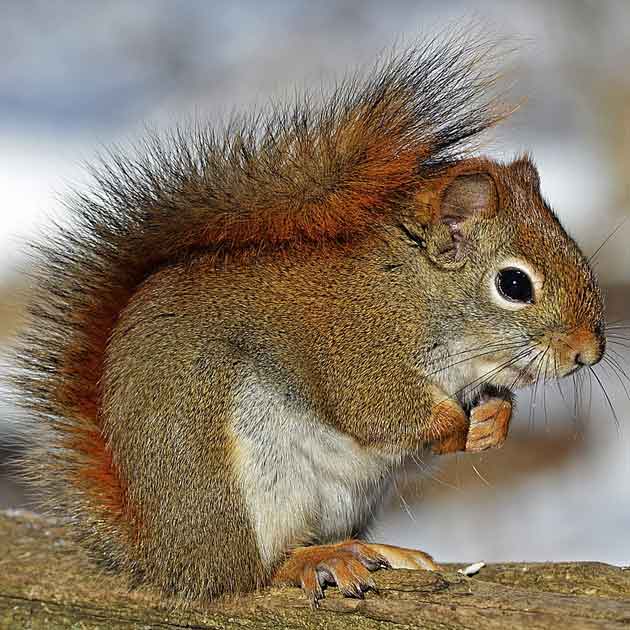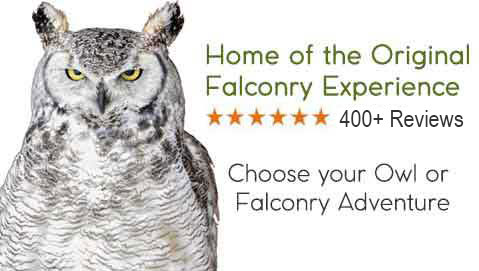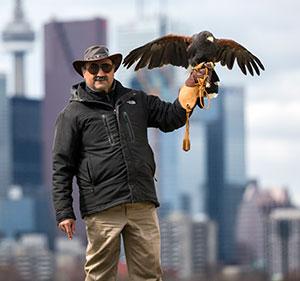Pickering and Ajax are two communities located only half an hour east of Toronto and known for some of the best hiking and cycling trails, lush ravines, and a beautiful waterfront. Forested neighbourhoods near Rouge Park, Altona Forest, or Duffins Creek Valley offer charm and an almost rural feel but they also act as natural raccoon highways, bringing animals from the wild to residential and commercial areas—especially in the fall as raccoons seek warm dens for overwintering.
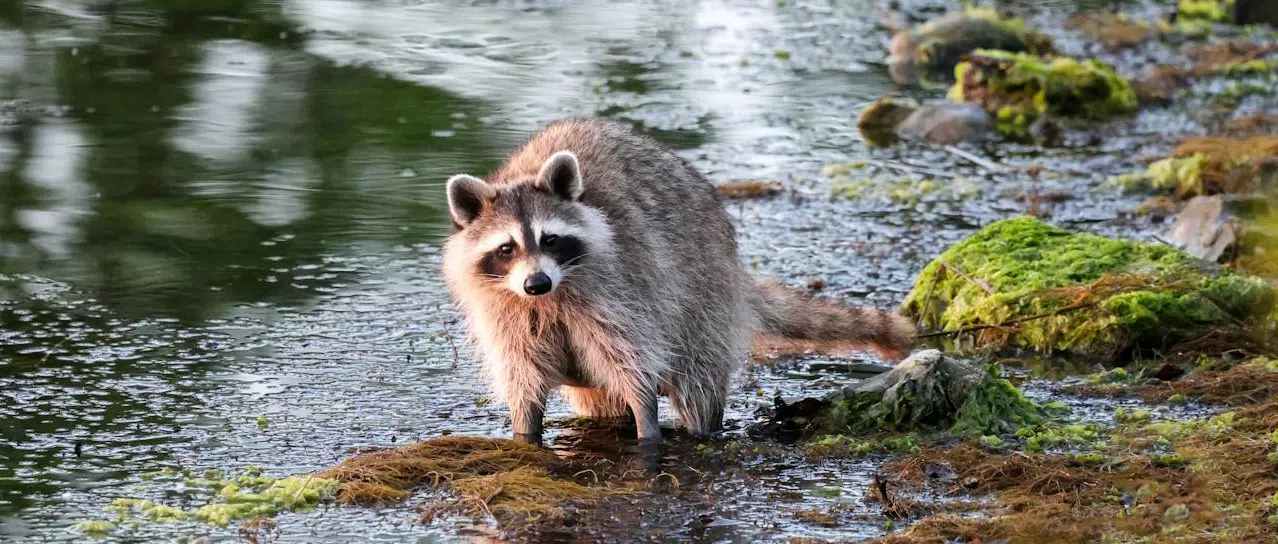
Due to loss of habitat and their incredible intelligence and adaptability, raccoons don't stay in the forest - they move into your home.
Why Fall Triggers Raccoon Infestations from Green Spaces
Survival Instinct
Fall is the season to prepare for long and often harsh Ontario winters. Here's what raccoons are looking for:
- Warm and secure shelter to build a winter den;
- Consistent food sources, often provided by unwitting humans (garbage, compost, outdoor pet food, etc.).;
- Quiet places with little human interference; this could be garden sheds and other outbuildings, attics, storage units, or under decks and porches;
The Urban-Forest Edge Effect
Neighbourhoods that border ravines are highly attractive due to the availability of water, seclusion, and food. Raccoons are rather opportunistic creatures and much prefer a quick and easy meal over one that needs to be chased down. Hence, they have learned to appreciate human offerings and view areas near the forest edge as ideal habitats.
Raccoon Hotspots in Pickering: High-Risk Ravine-Edge Zones
Residents and property managers in the following areas see a stark increase in raccoon activity once autumn has arrived: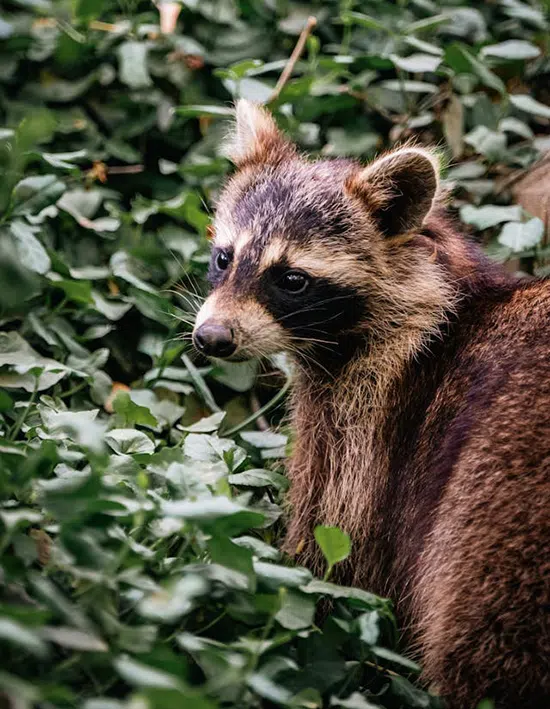
Rougemount / Highbush
- Proximity to Rouge National Urban Park and a natural wildlife refuge;
- Older homes, featuring large lots and mature trees;
- Raccoons can easily access rooftops via fences and branches.
Altona Forest / Amberlea
- Homes and schools are bordering dense forest;
- Green bins, school dumpsters, and open vents make for common entry points;
- We receive many reports of raccoons entering attic crawlspaces.
West Shore / Bay Ridges
- Close to Frenchman’s Bay and marshland trails;
- Ideal for raccoons nesting under sheds, decks, or boathouses.
Duffins Creek Corridor
- New developments + preserved lands = wildlife mixing with homes;
- Commercial developments near hydro corridors and wooded lots are also affected.
Why Raccoons Easily Move Between Ravines and Homes
- Unlike skunks or groundhogs, raccoons are motivated and agile climbers: They use fence lines, tree branches, and even utility poles to cross from ravines into backyards and rooftops;
- Raccoons are also clever and strong and readily rip soffits, pry open vents, and dislodge shingles to gain access to homes.
- Temporary exclusion methods fail when there’s a ready refuge in nearby woods.
Trapping and Relocating Raccoons from Ravine Areas Doesn’t Work
Relocation Near Forested Areas Creates New Problems
In Ontario, a trapped raccoon must be released within a 1km radius of its capture site. Most often, raccoons will return to the trap location - they have excellent homing instincts and recognize a good thing (your home). Even if they don't return to your home, chances are, they will set up a new den on your neighbour's property.
Only Licensed Wildlife Control Can Remove Raccoons Permanently
When it comes to raccoon control near ravines, the law limits what you as a home or business owner can do to get rid of raccoons in Pickering and the surrounding areas. You must stay within the 1km limit if you trap and release any wildlife in Ontario. While there are many raccoon and other wildlife removal services available in the Ajax and Pickering areas, only one offers permanent raccoon removal: Hawkeye Bird & Animal Control.
Hawkeye’s Permanent Raccoon Removal for Ravine-Side Areas
Why “Permanent” Matters
- There is no chance of the animal returning - Guaranteed.
- No re-entry damage and recurring costs from returning animals - Guaranteed.
Legal, Safe, Humane, and Effective in Sensitive Areas
- Hawkeye is authorized to operate on residential, commercial, and government properties;
- Hawkeye can legally access or work around protected areas when raccoons are encroaching on human zones;
- We work with municipalities, park officials, and building owners for legal and humane intervention.
How to Protect Your Property Near a Ravine from Raccoons
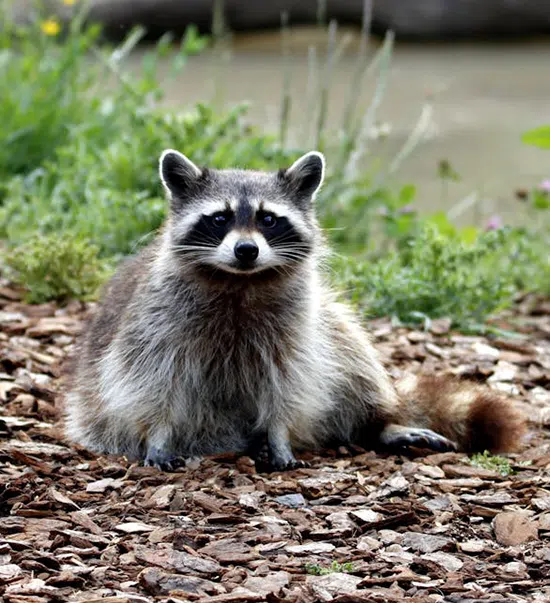 Even after permanent removal, prevention is key — especially near ravines and forests:
Even after permanent removal, prevention is key — especially near ravines and forests:
For Homeowners
- Seal entry points (roof vents, fascia gaps, chimney caps, foundation, siding, etc.);
- Trim overhanging branches that allow roof access;
- Lock garbage/green bins and remove all food sources;
- Install Electrical Shock Tracks on fences and lower rooflines;
For Commercial/Institutional Buildings
- Inspect rooftops and HVAC units;
- Secure waste storage behind restaurants, schools, or warehouses;
- Inspect lesser used maintenance or utility areas for signs of raccoon damage;
For Public Property Managers
- Train staff on early warning signs (droppings, roof damage, or noise)
- Place signage in parks urging no feeding of wildlife;
- Monitor sheds, garages, and washrooms in underused trailhead areas.
Call Hawkeye - Don't Delay!
Ravines and forested areas are part of what makes Pickering beautiful—but they bring raccoons closer to homes and businesses. Fall is the time to call a forest-edge wildlife control company —before raccoons have moved in and established winter dens.
Only Hawkeye offers legal, humane, and permanent raccoon removal services trusted by homeowners and municipalities in Ajax, Pickering, North York, and across the GTA.


